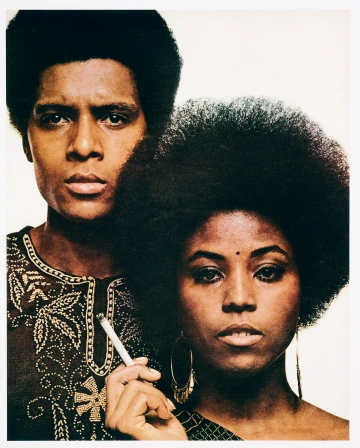Hank Willis Thomas Comes to Town
The U.S. Department of State Medal of Arts winner gets a retrospective at the University of Arizona Museum of Art.

Thomas next to his piece “20,923” at UAMA.
Chris Richards
On Feb. 2, 2000, a young man named Songha Willis Thomas was shot and killed outside a nightclub in Philadelphia. He was visiting his grandmother, had gone out with some friends, got robbed, got killed. Songha ended up being one of nearly 11,000 gun homicides in America that year; the number of deaths more than doubles if you count suicide.
“My life goal was to be his background dancer,” his cousin, the artist Hank Willis Thomas, says during a talk at the University of Arizona Museum of Art 25 years later. A joke, but also not. Songha was good at everything, Thomas says. “And so, I was like, ‘OK, I’ll just stand behind him and I’ll be fine.’”

“Farewell Uncle Tom”
Hank Willis Thomas (Courtesy of the Jordan Schnitzer Family Foundation; photo: Aaron Wessling Photography)
Thomas is discussing a piece of his called “20,923” (2021), a long, dark-blue flag studded with 20,923 white stars, one for each American life lost to gun violence in 2021. The flag is, of course, a variation on the American flag; the stars, a metaphorical representation of a lost loved one: a star in a brother or mother or father or cousin’s sky.
“20,923” is one of 90 pieces in a 20-year-retrospective called “LOVERULES,” which came to the U of A Museum of Art from the Henry Art Gallery at the University of Washington in Seattle and will be on display through June 21. Other work includes a series called “Unbranded,” in which Thomas digitally removed language and logos from advertisements to highlight the way Black Americans are represented in media, and a series of text-based images that twist the famous “I AM A MAN” signs held up by workers during the 1968 Memphis sanitation workers’ strike.
Like a lot of work in the show, the flag trades on simple, familiar imagery to pose frank questions about the American experience. When Songha was killed in 2000, for example, Thomas says he wondered why we had public memorials for Americans who died in the Vietnam and Korean wars, but none for the victims of an epidemic that has taken vastly more American lives.
The work eventually led Thomas to help found a group called For Freedoms — a play on Norman Rockwell’s painting series “Four Freedoms” — that uses billboards and public art to stimulate civic discourse and engagement. He has also made a 20-foot bronze sculpture on Boston Common inspired by the embrace shared between the Rev. Martin Luther King Jr. and Coretta Scott King after he won the Nobel Peace Prize in 1964.
Toward the end of the tour, Thomas shows us a black-and-white image of a man on crutches in a line of people marching. The people seem to float against an otherwise blank background. The image was originally taken by the photographer Spider Martin and later treated by Thomas with a process called a sugar lift, which allowed him to wash the background out.
These were some of the people who marched with King from Selma, Alabama, to Montgomery in support of civil rights in March 1965. The man on crutches was named Jim Letherer. He’d lost one of his legs to cancer as a child. He made the entirety of the 54-mile march on those crutches. In 1985, he celebrated the 20th anniversary of the march by doing it again.
In Thomas’s eyes, photography was crucial to helping America understand what people like Letherer were marching for: images of nonviolent resistance and violent reaction, images of Black people and white people, like Letherer, working together. In recognizing that his fellow citizens were not being given equal rights, Thomas says, Letherer realized his rights were in danger of being infringed upon, too.
Thomas, who was elected to the American Academy of Arts & Sciences in 2022 and given a Medal of Arts from the U.S. Department of State in 2023, concludes with hope: “I hope that each of us gets an opportunity to use our witnessing, whether it’s through the art we make or the stories we tell, not to demonize other people, but to encourage people to step in and support people they don’t necessarily know or understand or relate to. Because we would want them to do that for us.”
Photo Slideshow:
Interested in Learning More?
Visit the complementary poetry playlist coordinated by the University of Arizona Poetry Center







